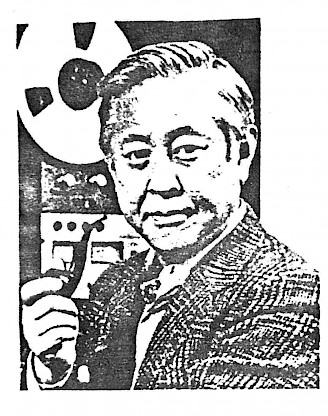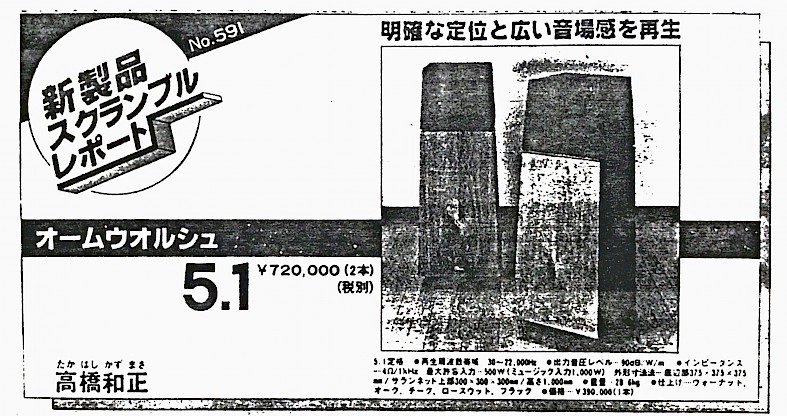Voicing Speakers: My Japanese Experience
The voice of a speaker is what you hear when you listen to it in a room. Preferably in your own room. This is where art comes into speaker design. Most competent speaker designers can measure speakers in many different ways. And, most can change that ‘voice’ in relation to those measurements. Getting the ‘voice’ to reproduce music accurately is the art. Most speaker brands have a similar ‘voice’ across their product line. A dramatic demonstration was my experience trying to get a foothold in the Japanese high end audio market.
For several years in the 1990’s ITOCHU (at the time, the world’s largest company by sales) sold our Walsh 5 Limited Edition in Japan. They were the best speaker I knew how to make. ITOCHU had difficulty recruiting dealers because their ‘voice’ did not sound similar to the ‘best’ Japanese speakers.
In frustration, I asked ITOCHU to send me an example of a pair of the ‘best’ Japanese speakers. I expected to be able to voice a pair of Walsh speakers to match their sample and to keep all the imaging and wide sweet-sweep we are renowned for creating.

The reference
They sent us a pair of bookshelf speakers with matching stands. They were physically beautiful in a piano black cabinet with gold colored drivers and a black-velvet bag to keep over them when not in use. These were very expensive and not sold in the US.
Their ‘voice’ was quite different from our Ohm speaker or any others I had ever auditioned. I was familiar with the voicing war in the US: East Coast sound versus West Coast sound. AR and KLH versus JBL and Altec. Laid back with concert hall response curves versus very forward with voices in front of instruments. These Japanese speakers took the West Coast sound and put the vocals all the way up in your face, if not in your lap!
I cannot say they had a ‘voice’ that I liked. But in this case, ‘beauty is in the eyes of the beholder’ is actually ‘beauty is in the ears of the buyers’. So, I went to my task.

The art
First, I needed to measure them to find a target response. When they were on their stands and measured from about a meter back (which seemed like a fair starting point), their frequency response was remarkably flat over a wide horizontal sweep and a narrow vertical angle. They seemed to measure much, much better than they had sounded.
We soon discovered that the midrange was radiating just as loudly from the back and sides as was the front. The treble was gone in the rear and there was very little bass in any direction. It turns out, between the shape of the cabinet and the placement of the driver, the speaker worked just like an antenna for broadcasting the voice range.
We had our work cut out for us. We were ultimately able to produce a Walsh 2 size speaker with the Japanese voicing and our imaging. We shipped the Japanese reference speakers plus our similarly voiced, custom Walsh 2 to Japan. ITOCHU hired one of Japan’s leading audio reviewers to do an evaluation.

The audition
They set up the Japanese reference speakers in a mid-sized conference room in their corporate headquarters and matched them with very fine equipment to drive them. The reviewer got to do the final placement and tweaking. He then listened to a group of records he had brought with him for the evaluation. The reviewer confirmed that these were very fine speakers and that any manufacturer could be proud of making them; they did everything well, including imaging when you sat in their sweet-spot.
In the next step we set up our custom Walshs that I had voiced to match when auditioned in the same sweet spot. Unlike the Japanese reference speakers, the Ohms had great imaging over a wide sweet-sweep.
The reviewer ran through his same set of tests on the Walshs. He concluded we had done a very good job of voicing ours to match the reference speakers and had done an unbelievable job of widening the Sweep-Spot. In fact, he had never experienced such reproduction.
He really, really wanted to hear the Walshs with Ohm’s voicing for America. We put on a pair of Walsh 5 Limited Edition speakers. Same tests again. The reviewer said he wanted to think about his experience a bit before commenting, so we took him out to a fine dinner.

The Aftermath
After dinner, he gave his report. Although the Japanese Reference speakers were excellent and the custom Walsh matched the voicing well, it would be a mistake to market Ohm speakers with this voicing. The American voicing was much more neutral and more accurately reproduced music and vocals. Plus, the Ohms had amazing imaging over the widest sweet-sweep he had ever experienced. This was the sound, the voice, all manufacturers should be striving to produce. Ohm should be positioned as a leader in a major step forward in speakers.
Our distributor agreed and started pushing for reviews. Several reviews claimed the Walsh 5 Limited Edition may be the best speaker in the world, and they did image far better than any others. They started making sales and we were even able to add distributors in Korea and Singapore.
I went back home and worked on a version for smaller, Japanese sized rooms and brought prototypes to the next Tokyo Audio Fair. When they got the first samples, ITOCHU made a marketing mistake that marked the end of our distribution in Eastern Asia. But that is a story for another day.
Subscribe to Ohm News & Views to get the latest posts in your inbox
John Strohbeen Author
John Strohbeen was the President and Chief Engineer of Ohm Acoustics from 1978-2023.


